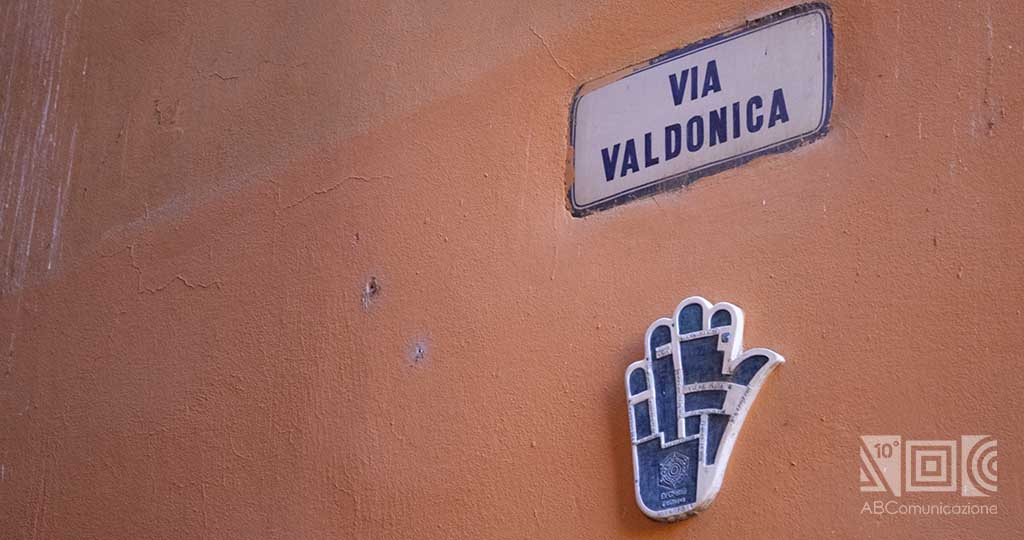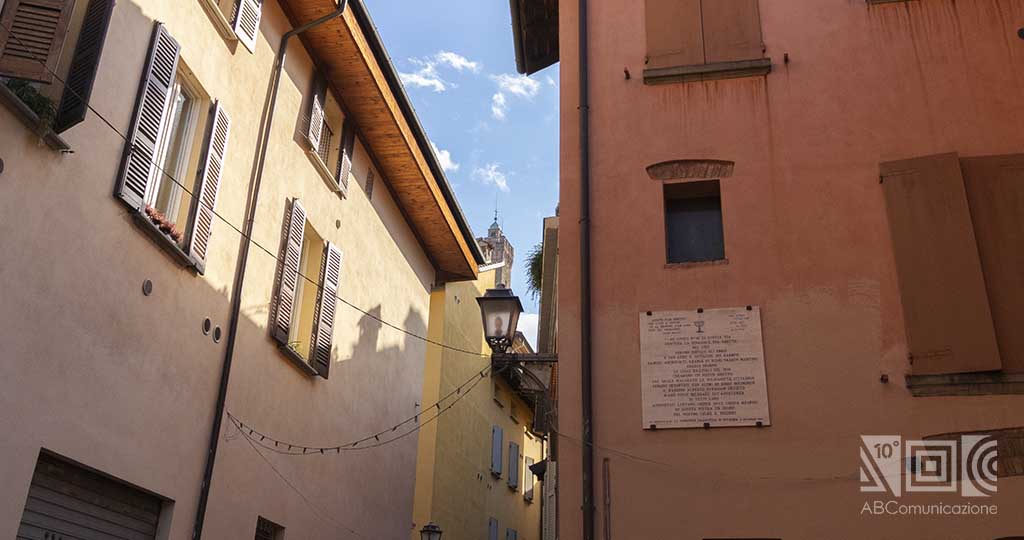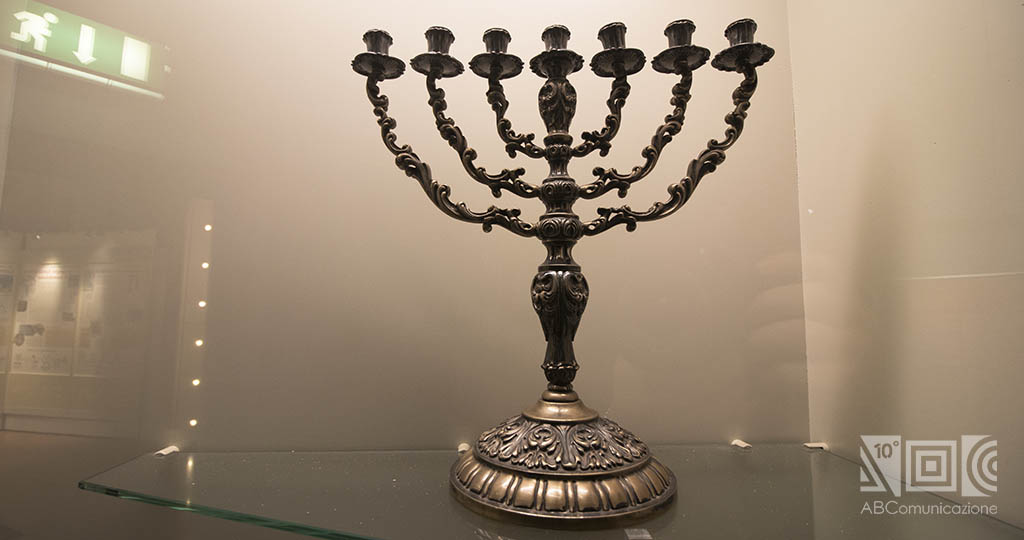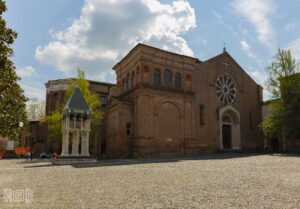Do you want to discover the history and curiosities of the Jewish ghetto of Bologna? Keep reading our article!
How was the Jewish ghetto born?
The Jewish ghetto of Bologna was born in the XVI century, around 1555 a.d., following the papal bull issued by Pope Paul IV which established the provision of a delimited area of the city for the Jewish community.
The Jewish community in Bologna was very lively and its activity mainly concerned the trade and trafficking of money. Initially, the members of the community were well accepted and integrated into city life, so that the University of Bologna established a chair in the history of Judaism. If you are interested in its history, do not miss the article Bologna: the oldest university of the Western world.
Following the papal bull, however, the Jews began to be confined to the “serail of the Jews”, which would later take the name of the Jewish ghetto. In addition, members of the Jewish community had to wear a yellow “shaman” or veil to be identified as such and soon a ban on selling new items was also imposed (hence the trade in second-hand clothing).
Do you know that the University of Bologna among its locations scattered through the streets of the city, such as San Giovanni in Monte, also houses one of the oldest gardens in Europe? Discover it with us in the article L’orto botanico di Bologna: one of the oldest gardens in Europe.

Relations between the Jewish community and the city life
Relations between the Jewish community and city life have been controversial and fluctuating for many years.
After a period of peace (which brought the city considerable economic and cultural advantages), the Jewish community was expelled for the first time in 1569, only to return in 1586. Later, it was again expelled in 1593, until its return during the Napoleonic age. The recognition of Italian citizens in all respects only took place with the Unification of Italy, occurred on March 17, 1861 and now a national holiday.

The Jewish ghetto today
The Jewish ghetto is still located in the center of Bologna today, winding between St. Zamboni, St. Oberdan and St. Marsala, in the medieval quarter.
The place that was attributed to it is no coincidence: it was, in fact, an area considered secondary to the city, since there were no historical buildings or relevant places. Furthermore, the area of the Jewish ghetto could be easily circumscribed by raising the walls.
Discover with us the history of the defensive walls of Bologna. From their history also derives the name of Quadrilatero, for all that central area of the city, which today contains workshops of artisans, fish shops and taverns where you can taste the culinary tradition of Bologna, as the ancient art of sfogline!

The map of the Jewish ghetto
As we have seen, the Jewish ghetto of Bologna is located in the very center of the city. All the walls feature a porcelain tile representing the Hand of Miriam, a symbol of Jewish culture, marking the area and making it recognizable.

In the past, the area of the Jewish ghetto was bordered by three gates that were closed from the outside at sunset, preventing those inside from going out. Today it is possible to see only one between St. del Carro and St. Zamboni, at the Palazzo Manzoli-Malvasia.
Furthermore, due to the tension in the relationship between the Jewish community and the city of Bologna, a hotel was set up in St. Fusari 9 where only passing Jews could stay overnight. The name of the hotel (still in operation) is “Al Cappello Rosso” and derives from the hat that, at that time, members of the Jewish community were forced to wear as a symbol of recognition.
Curiosity of the ghetto
Between the buildings of the Jewish ghetto there were elevated walkways, which made it possible to move from one building to another or to check who was approaching the house.
An interesting curiosity concerns the windows of the buildings: almost all of them were small and tall, so as not to represent an easy escape route for those inside. In addition, there were many peepholes, thanks to which you can check the outside without being seen.
In the end, in St. dell’Inferno it is possible to find the plaque indicating the place where the ancient Synagogue of Bologna stood, read on to discover its history!

To complete the picture of the classic sacred and religious places not to be missed in Bologna, you can not miss the Basilica of Santo Stefano, with its legends and centuries-old traditions, whose history intersects and connects, through the figure of San Petronio, with two other iconic places: the Cathedral of San Pietro and the Basilica of San Petronio.
Bologna is a city full of secrets and curiosities: if you want to know them do not miss our article A journey through the Seven Secrets of Bologna. You can follow a really interesting itinerary through the city!
The Synagogue of Bologna
Right in the center of the Jewish ghetto, near the two Towers of Bologna, stands the Synagogue of Bologna.
The Jewish community built the Synagogue in 1928 to practice their worship, but it was destroyed in 1943 following the bombing of the Second World War. It was then rebuilt in 1953 and is still in use today.
The new project follows the original structure. The Synagogue is a very important building on an artistic level: upon entering, you immediately notice the modern furnishings and a large colored glass window that illuminates the interior. On the external facade there is another large window with the shape of the Star of David (symbol of the Jewish community) and a plaque commemorating the Bolognese victims of the Holocaust.
The Synagogue is not the only important building in the Jewish ghetto. Discover with us the Jewish Museum of Bologna!
The Jewish ghetto is not the only space in the city that keeps memory of the victims of the Second World War: in Piazza del Nettuno, with the majestic fountain of the god of the seas, in the wall of the Salaborsa Library, you can observe the Shrine of the Partisans. This is a wall in which there are hundreds of photographs of young partisans who fell during the struggle for liberation.

The Jewish Museum of Bologna
In the Jewish ghetto you can find another important building for the city: the Jewish Museum of Bologna.
Located in St. Valdonica 1/5, the Jewish Museum was inaugurated in 1999 and it is still managed by the Associazione degli Amici del Museo and supported by Emilia-Romagna Region.

The Jewish Museum is divided into three sections: the section that houses the permanent collection, a second one that for temporary exhibitions and a documentation center.
The collection of the permanent section focuses on the theme of Jewish identity. It refers, in particular, to the history of Jewish Community that had settled in the area of Emilia-Romagna.
The section for temporary exhibitions has spaces for meetings, debates and activities of all kinds. Over the years, this place housed lots of conferences, seminars and educational meetings for children. Moreover, in 2001, a bookshop was added, where you can still buy books and much more.
The last section houses the Documentation Centre of the Jewish Museum. It has two areas: a specialized library that holds more than 2000 volumes and a cultural and promotion centre. It is also affiliated with the University of Bologna, with lots of local museums and some research centres in Europe, Israel and in the United States.
On the Day of Remembrance and the European Day of Jewish Culture, numerous meetings and conferences. You can find all the information about the next events on the site of the Union of Italian Jewish Communities (UCEI).
The opening hours of the museum
The museum is open from Monday to Thursday from 10 am to 6 pm and on Friday from 10 am to 4 pm.
The ticket costs 7 euros, the reduced one 5 euros for students, over 65 and owners of the Card Cultura Bologna. The visit is completely free for children under 6 years old, people with disabilities and tour guides.
Curiosities are not over yet. Discover with us the first Jewish cemetery of Bologna!
The first Jewish cemetery of Bologna
Located in St. Orfeo, the first Jewish cemetery of Bologna was completely dismantled in 1569, when the Jewish community was expelled from Bologna. The land was then given to the Monache di San Pietro, who destroyed the remains of the original cemetery.
Today, just four Jewish tombstones are left: they are currently preserved at the Medieval Civic Museum in St. Manzoni 4.
The sepulchral monument of Shabatài Elkanàn from Rieti stands out among others for its sculpted images and for its refined artistic taste.
These tombstones are not only relevant from an artistic and cultural point of view, but they made us discover lots of informations about the Jewish writing of the time.
The new Jewish cemetery is located at the Certosa of Bologna since 1869, sited at the bottom of colle della Guardia, at the top of which you can see the Sanctuary of the Madonna of San Luca (check the article The Sanctuary of the Madonna of San Luca between sacred and legend to find out everything about it).
You can find there some majestic sepulchral monuments of Jewish families made by famous artists. For example, the Art Nouveau tomb made by Silverio Montaguti for the Zamorani family.
Do you know that the arcades of Bologna have become part of the UNESCO World Heritage Site? In addition, UNESCO has always defined Bologna as the Creative City of Music. Find out more about our article Bologna: city of music.
Bibliography:
- Bellucci D., 111 luoghi di Bologna che devi proprio scoprire, Roma, Emons Edizioni, 2021.
- Costa T., Bologna dalla A alla Z, Bologna, Costa Editore, 2011.
- Goldoni A., Storia di Bologna dalle origini ai giorni nostri, Pordenone, Biblioteca dell’Immagine, 2018.
- Menarini A., Vianelli A., Leggende e curiosità, Bologna, Tamari Editori, 1976.




